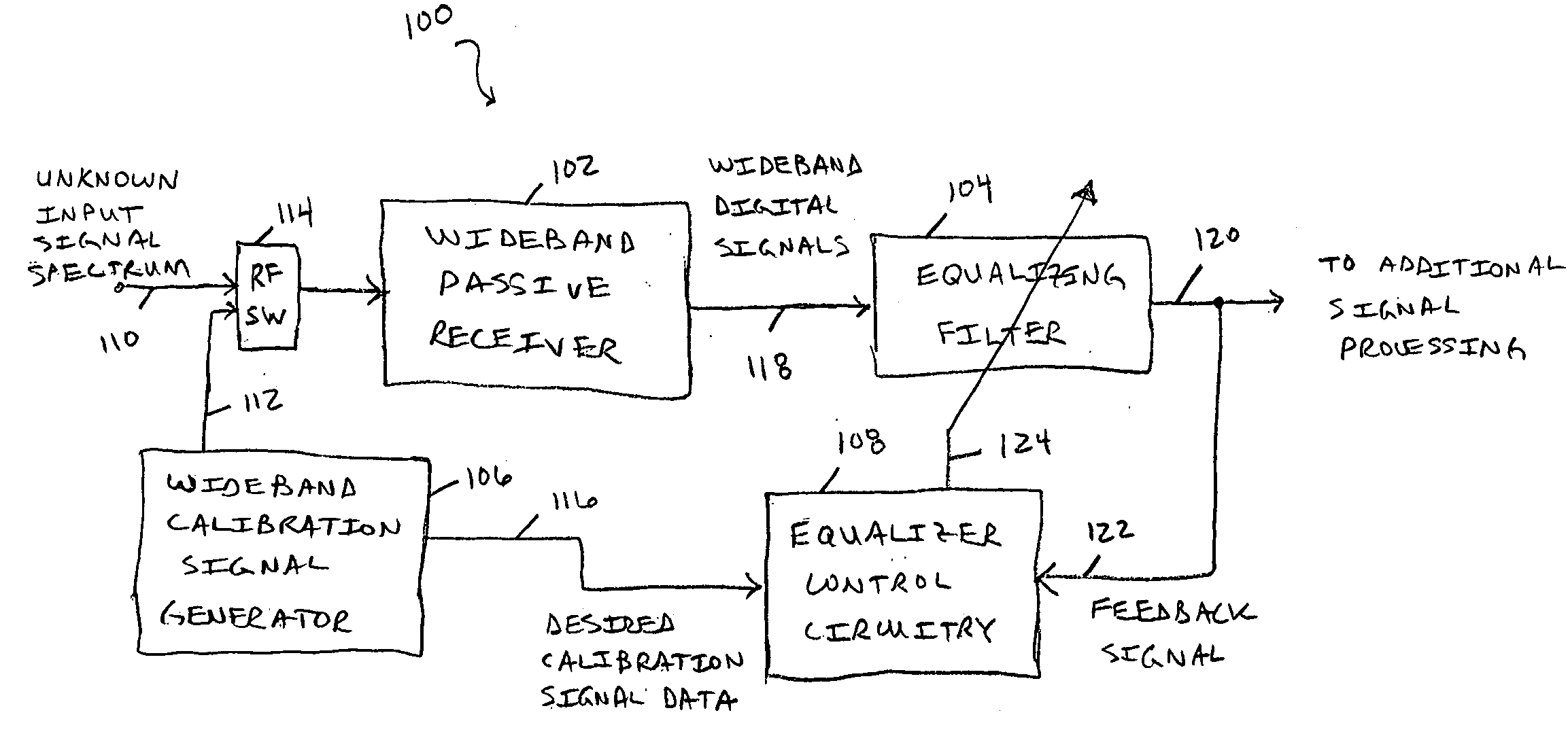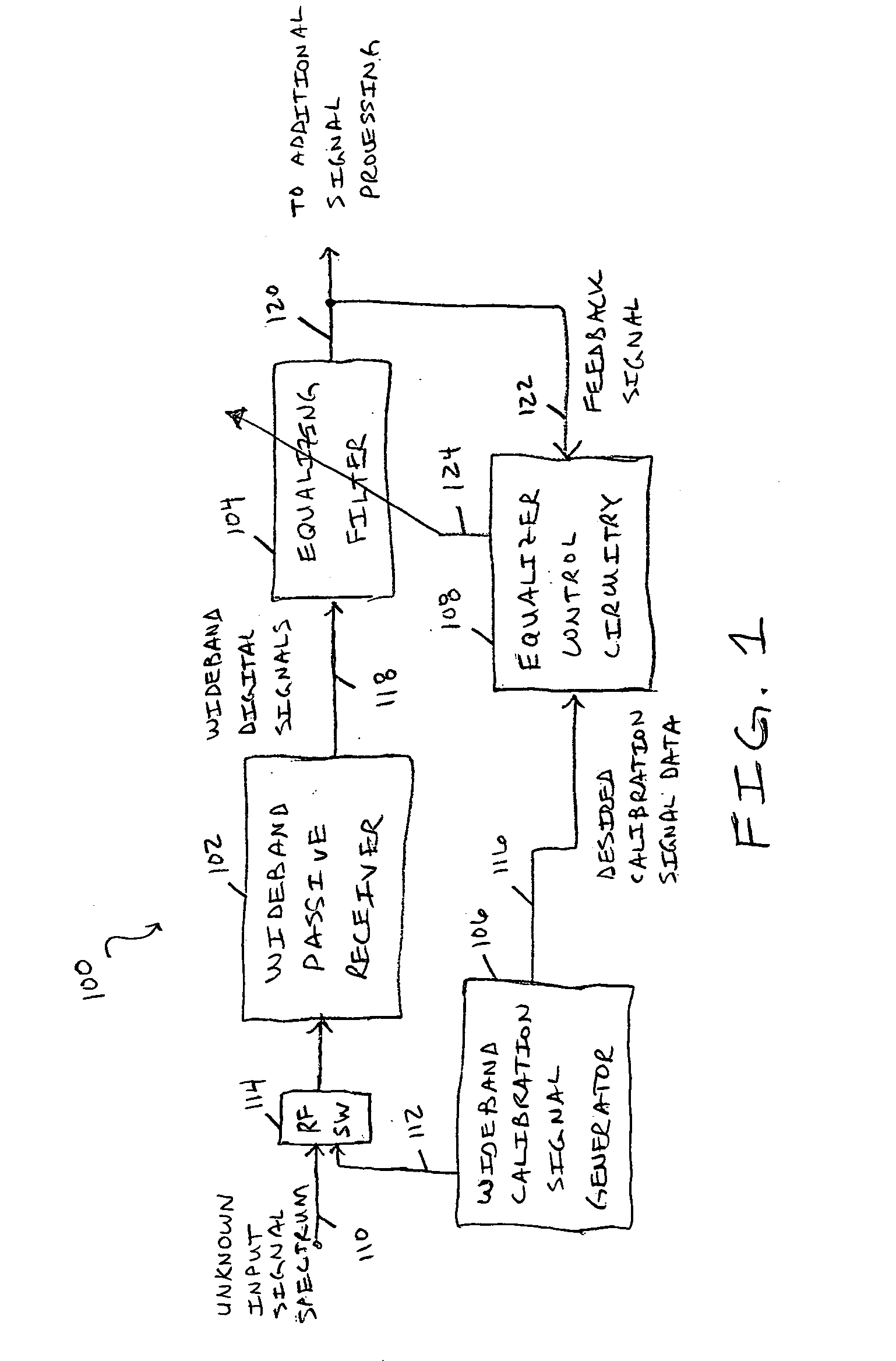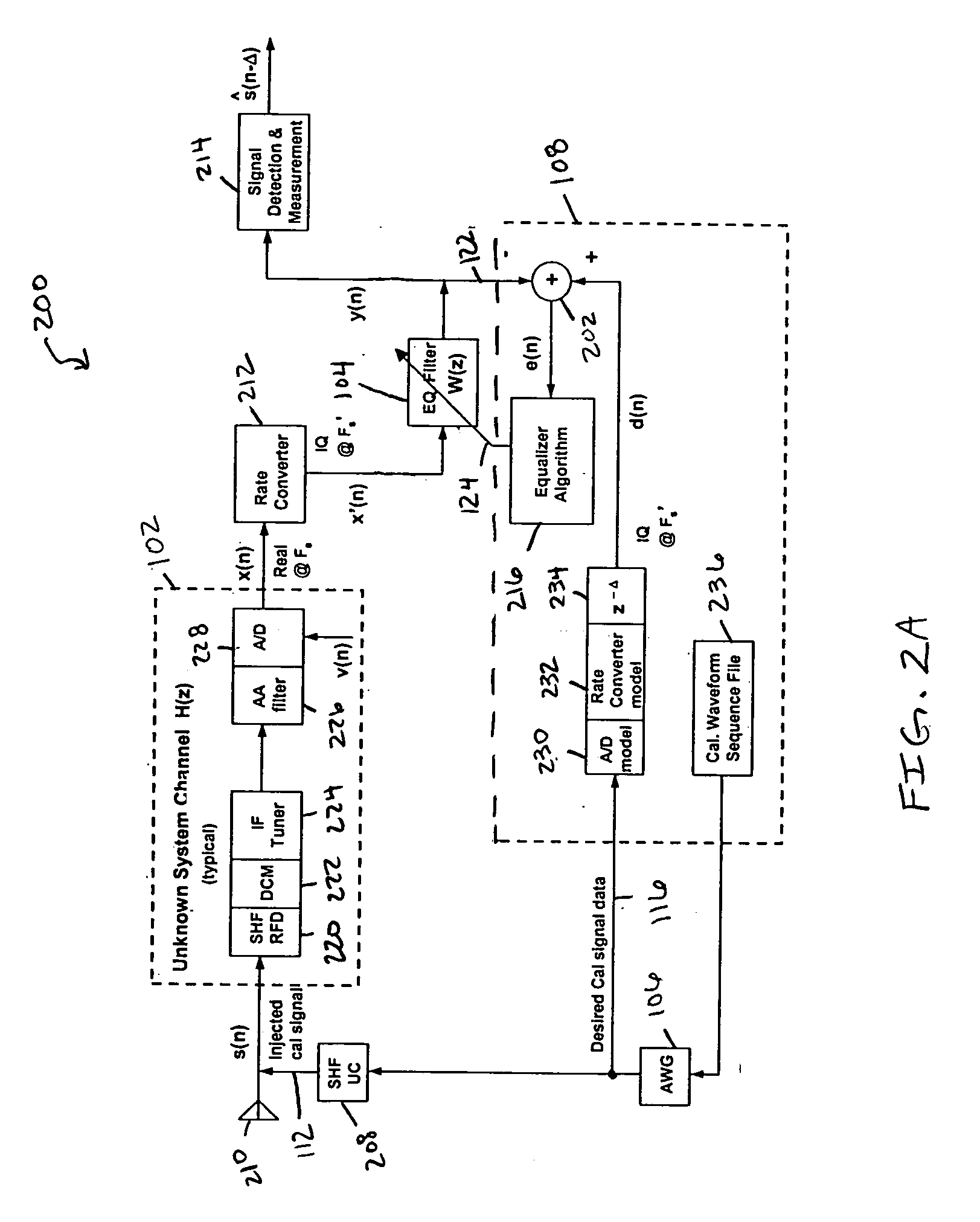Adaptive channel equalization technique and method for wideband passive digital receivers
a wideband, digital receiver technology, applied in the field of passive digital receivers, can solve problems such as variations in the transfer function characteristics, and achieve the effect of minimizing digital receiver signal measurement distortion and minimizing passive digital receiver signal distortion
- Summary
- Abstract
- Description
- Claims
- Application Information
AI Technical Summary
Benefits of technology
Problems solved by technology
Method used
Image
Examples
embodiment 100
[0017]FIG. 1 is a block diagram of an embodiment 100 for a wideband passive digital receiver including an adaptive channel equalization filter 104 that uses a wideband calibration signal 112. As depicted, the receiver system 100 includes a wideband passive receiver 102, an equalization filter 104, equalizer control circuitry 108, a wideband calibration signal generator 106, and an RF switch (RF SW) 114. The input signal is typically a radio-frequency spectrum from unknown signal sources. This unknown input signal spectrum is processed by the wideband passive digital receiver 102 and the equalizing filter 104 to produce digital output signals 120 that can be subjected to further desired processing. The adaptive channel equalization filter 104 and the novel calibration technique of the present invention that utilizes a wideband calibration signal 112 allows for equalization of tuning errors induced by the receive path circuitry itself across the wideband range of the receiver 102. In ...
embodiment 200
[0024]FIG. 2A is a more detailed block diagram of an embodiment for a wideband passive digital receiver including an equalization filter that uses a wideband calibration signal and where the input signal spectrum is not known to the receiver system. In particular, embodiment 200 includes a receiver 102 with an unknown system channel transfer function H(z), a sample rate converter 212, a signal detection and measurement block 214, an equalization (EQ) filter 104 with a filter transfer function W(z), equalizer control circuitry 108, a calibration chirp signal generator (AWG) 106, and a super high-frequency, RF up-converter (SHF UC) 208. The receiver 102 includes an SHF RF distribution Network (RFD) 220, a down conversion module (DCM) 222, an IF tuner 224, an anti-aliasing (AA) filter 226 and an analog-to-digital (A / D) converter 228. System noise is represented by signals v(n). The equalizer control circuitry includes an A / D converter 230 that is a model of A / D converter 228, a rate co...
embodiment 300
[0055] To describe the embodiment 300 of FIG. 3 in more detail, this embodiment depicts a block diagram of a BLMS adaptive equalizer implementation for use in a DSP processor or FPGA firmware type application. The first n=0:N-1 values of x(n) and d(n) are input to initiate the equalization process of the data. Any DC bias is removed from the x(n) and d(n) values input followed by magnitude normalization. The x(n) values are then loaded into the XL,N matrix composed of L shift registers, each of depth N where the oldest value is the rightmost column. The first row is the oldest group of N values and the last row is the newest group of N values. The input d(n) values are delayed by N / 2 samples (for example, with the insertion of N / 2 zeros) in order to align d(n) with the x(n) data. The initial N values of d(n) input are discarded. The block processing of L samples per block now begins (k=0). The next L samples are input and buffered for x(n) and d(n) to create the matrices X(k=0) and ...
PUM
 Login to View More
Login to View More Abstract
Description
Claims
Application Information
 Login to View More
Login to View More - R&D
- Intellectual Property
- Life Sciences
- Materials
- Tech Scout
- Unparalleled Data Quality
- Higher Quality Content
- 60% Fewer Hallucinations
Browse by: Latest US Patents, China's latest patents, Technical Efficacy Thesaurus, Application Domain, Technology Topic, Popular Technical Reports.
© 2025 PatSnap. All rights reserved.Legal|Privacy policy|Modern Slavery Act Transparency Statement|Sitemap|About US| Contact US: help@patsnap.com



